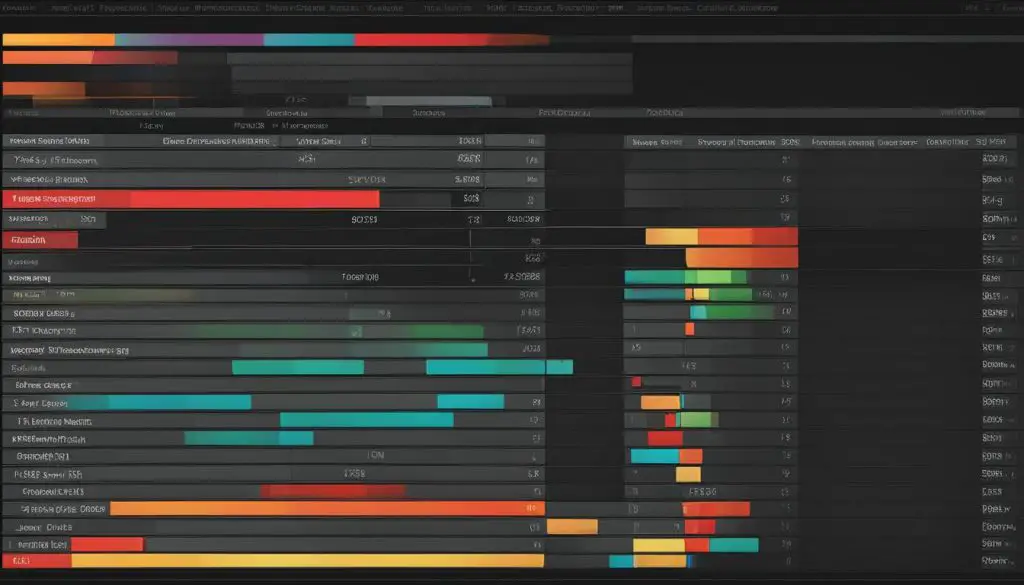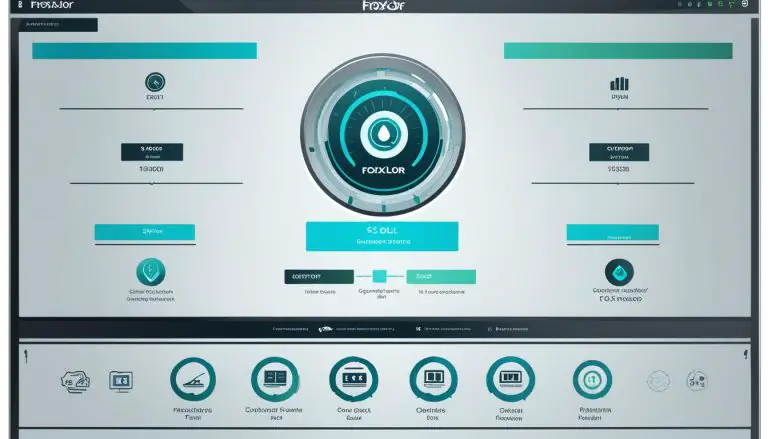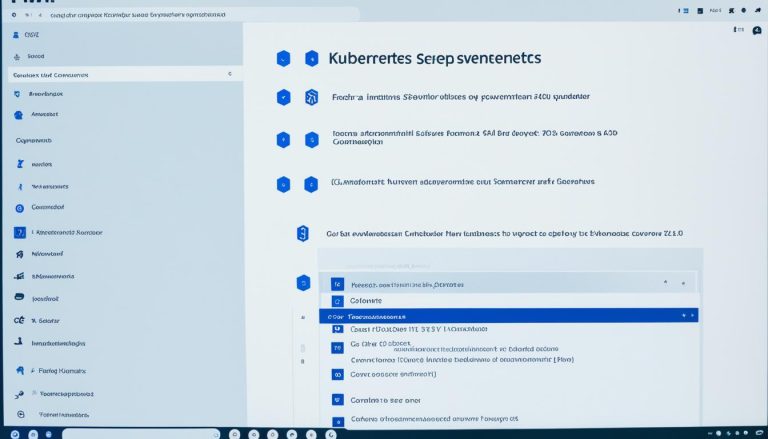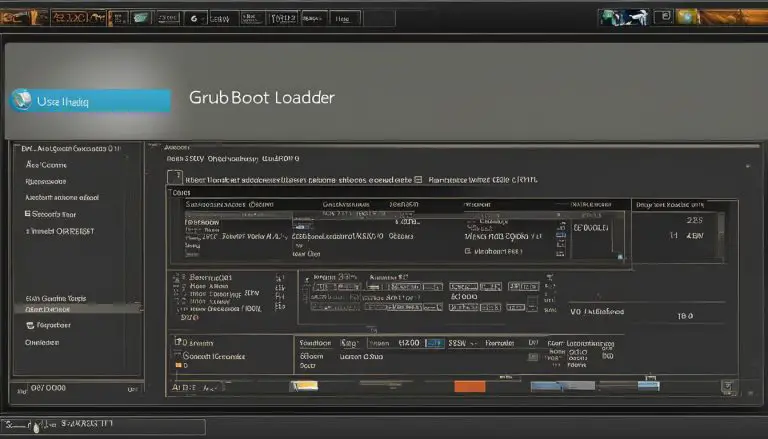Understanding Linux: What is Systemd Explained
Systemd is a powerful system and service manager, designed to replace legacy Linux initialization systems like System V and Linux Standard Base init. It revolutionizes the way Linux systems are managed by streamlining the entire process from system boot to shutdown.
At its core, Systemd uses unit files to control related processes, simplifying system administration by consolidating all necessary elements for a service into a single unit file. This eliminates the need for complex scripts and ensures efficient management of services.
With Systemd, you can experience faster boot times, as it parallelizes service starts, conserves system resources by starting services on demand, and provides unified logging through the systemd journal. It also improves process organization through cgroups, allowing for efficient resource allocation.
Key Takeaways:
- Systemd is a modern replacement for legacy Linux initialization systems.
- It serves as a system and service manager, handling the entire process from system boot to shutdown.
- Systemd uses unit files to control related processes, simplifying system administration.
- It offers benefits such as faster boot times, resource conservation, unified logging, and improved process organization.
- Systemd provides a robust framework for system administration and has become the standard for modern Linux systems.
Systemd Features and Advantages
Systemd offers a range of features and advantages that make it a powerful system and service manager for Linux systems. Let’s take a closer look at some of the key benefits it provides:
1. Faster Boot Times and Efficient Process Management
Systemd revolutionizes the boot process by parallelizing service starts, resulting in significantly faster boot times. It manages complete process management, allowing services to start on demand and putting them to sleep when not in use. This efficient utilization of system resources ensures optimal performance and responsiveness.
2. Simplified Administrative Tasks
With systemd, administrative tasks are simplified through its ability to handle listening sockets and ensure services start in the correct order. It eliminates the need for complex shell scripts and centralizes all the elements necessary for a service in a single unit file. This streamlined approach saves time and effort for system administrators.
3. Unified Logging and Resource Allocation
One of the standout features of systemd is its unified logging through the systemd journal. This centralized logging system provides administrators with easy access to system-wide logs, making troubleshooting and monitoring more efficient. Additionally, systemd utilizes Kernel Control Groups (cgroups) to organize processes, enabling efficient resource allocation and management.
Overall, systemd offers a comprehensive set of features and advantages that enhance system performance, simplify administration tasks, and provide robust logging and resource management capabilities.
| Feature | Advantage |
|---|---|
| Faster Boot Times | Parallelized service starts result in significantly faster boot times. |
| Efficient Process Management | Services start on demand and are put to sleep when not in use, optimizing system resources. |
| Simplified Administrative Tasks | Handles listening sockets and ensures services start in the correct order, streamlining system administration. |
| Unified Logging | Centralized logging system through systemd journal provides easy access to system-wide logs for efficient troubleshooting. |
| Resource Allocation | Utilizes Kernel Control Groups (cgroups) to organize processes, enabling efficient resource allocation and management. |
Systemd and Other Init Systems
Systemd stands out among other init systems, such as System V init and Upstart. While System V init relies on scripts executed sequentially, systemd parallelizes service starts, improving overall efficiency. Upstart, on the other hand, focuses on managing system state through event-based activation. Compared to System V init, systemd offers more extensive functionality and handles tasks beyond the scope of a traditional init system.
Comparison of Init Systems
To understand the advantages of systemd over other init systems, let’s compare some key features:
| Init System | Parallel Service Starts | Event-Based Activation | Extensive Functionality |
|---|---|---|---|
| System V init | No | No | No |
| Upstart | No | Yes | No |
| Systemd | Yes | No | Yes |
Systemd’s parallel service starts significantly improve system boot times, while its extensive functionality allows for robust system management and control. Although Upstart offers event-based activation, it lacks the advanced features provided by systemd. System V init, being a traditional init system, falls short in terms of both parallelization and functionality compared to systemd.
Systemd’s comprehensive approach to system and service management sets it apart from other init systems, making it the preferred choice for modern Linux distributions.
Systemd Unit Files and Configuration
Systemd, as a modern and efficient system and service manager, utilizes unit files for managing processes and services. These unit files contain all the necessary elements and configurations for a specific service, simplifying administration and ensuring streamlined execution.
There are several types of unit files in systemd, each serving a unique purpose:
- Service units: These units define services provided by systemd and control how they are started, stopped, and managed.
- Socket units: Socket units manage network or IPC sockets used for inter-process communication.
- Target units: Target units represent groups of services that need to be reached, such as multi-user or graphical.target.
These unit files can be found in the default package installations, while user-specific configurations can be made in the /etc/systemd/system/ directory.
Configuring systemd through unit files allows for precise control over system resources and dependencies. By defining and customizing these files, administrators can tailor their systems to specific requirements and optimize the overall performance.
To illustrate the concept of systemd unit files and their configuration, the table below showcases an example of a service unit file:
| Section | Description |
|---|---|
| [Unit] | Defines the unit and its properties. |
| [Service] | Specifies the service properties and behavior. |
| [Install] | Determines the dependencies and ordering of the unit. |
This example highlights the structure of a unit file and demonstrates how different sections are used to define the unit’s properties, service behavior, and installation dependencies.
Summary
Systemd unit files play a vital role in managing processes and services in a modern Linux system. They provide a centralized configuration method and allow for flexible customization according to specific requirements. Unit files, such as service, socket, and target units, define various aspects of system behavior and resource allocation. By understanding and leveraging the power of unit files, administrators can effectively configure and optimize their systems with systemd.
Managing Dependencies in Systemd
Systemd excels in managing dependencies, allowing for flexible activation and ensuring that failures in one dependency do not disrupt the entire system. systemd provides several dependency types, including Requires, Wants, Conflicts, Requisite, and Before. Each type defines specific behaviors for activating and managing dependencies. The use of these dependency directives in unit files allows for precise control and reliable system operation.
The following table provides an overview of the different dependency types available in systemd:
| Dependency Type | Description |
|---|---|
| Requires | Specifies a hard requirement on another unit. If the required unit fails, the dependent unit will also fail to start. |
| Wants | Specifies a weak requirement on another unit. If the wanted unit fails, the dependent unit will still start successfully. |
| Conflicts | Specifies that the dependent unit conflicts with another unit. If the conflicting unit is active, the dependent unit will be skipped. |
| Requisite | Specifies a hard requirement on another unit. If the required unit fails, the dependent unit will also fail to start. Additionally, if the dependent unit fails, the required unit will also fail. |
| Before | Specifies that the dependent unit should start before another unit. This ensures a specific order of unit activation. |
By carefully configuring these dependency directives in systemd unit files, administrators can ensure that services and processes start and stop in the correct order, preventing disruptions and maintaining system stability. Systemd’s dependency management provides granular control over unit activation and helps to create a well-orchestrated system environment.
Systemd Boot Process and Initialization
When it comes to the boot process and initialization, systemd takes a different approach compared to traditional init systems. Instead of following a sequential pattern, systemd reacts to system events and activates components as needed. This allows for parallelization and ultimately leads to faster boot times. systemd’s flexible initialization process ensures smooth system operation and efficient resource allocation.
During the boot process, systemd loads its configuration and determines the boot goal and dependencies. It then activates services and other components accordingly. By leveraging its ability to parallelize service starts, systemd significantly improves efficiency compared to legacy init systems. Services are started on demand, conserving system resources, and put to sleep when not in use.
In addition to managing the boot process, systemd excels in handling dependencies. It offers various dependency types, including Requires, Wants, Conflicts, Requisite, and Before, allowing for flexible activation and reliable system operation. With precise control over dependencies, systemd ensures that failures in one dependency do not disrupt the entire system.
Table: Comparison of Systemd Boot Process and Traditional Init Systems
| Aspect | Systemd | Traditional Init Systems |
|---|---|---|
| Parallelization | Starts services in parallel, improving efficiency | Sequential execution of scripts, leading to slower boot times |
| Resource Conservation | Starts services on demand, conserving system resources | Starts all services during boot, consuming unnecessary resources |
| Dependency Management | Precise control over dependencies ensures reliable system operation | Relies on script execution order, making it prone to dependency conflicts |
By combining parallelization, resource conservation, and efficient dependency management, systemd revolutionizes the boot process and initialization of Linux systems. Administrators can rely on systemd’s robust framework to ensure smooth system operation and optimal resource allocation.
Customizing Systemd with GRUB
When it comes to customizing systemd, the GRUB (Grand Unified Boot Loader) configuration provides a powerful tool to modify and personalize the boot process of your Linux system. By making changes to the
1 | /etc/default/grub |
file, you can tailor various settings to your liking and enhance your system’s boot experience.
One area where you can make adjustments is the GRUB menu countdown. By modifying this setting, you can control how much time the GRUB menu appears before the default entry is automatically selected. This allows you to streamline the boot process or provide additional time for manual selection, depending on your preference.
Another aspect of customization is the display of boot-time messages. By tweaking the GRUB configuration, you can choose whether to show or hide these messages during startup. This can be particularly useful for troubleshooting purposes, as it provides visibility into the initialization process and helps identify any issues that may arise.
Overall, customizing systemd through the GRUB configuration empowers you to tailor your Linux system’s boot process to your specific needs. Whether you want to streamline the boot sequence, troubleshoot startup issues, or simply personalize the experience, the GRUB configuration offers a range of options to explore.
Table: GRUB Configuration Options
| Configuration Option | Description |
|---|---|
| GRUB_TIMEOUT | Sets the countdown time for the GRUB menu in seconds. |
| GRUB_HIDDEN_TIMEOUT | Sets the timeout for the GRUB menu when it is hidden. |
| GRUB_DEFAULT | Determines the default entry in the GRUB menu. |
| GRUB_CMDLINE_LINUX | Adds additional kernel parameters to the boot command line. |
| GRUB_DISABLE_RECOVERY | Disables the recovery options in the GRUB menu. |
These are just a few examples of the GRUB configuration options available to you. By exploring the
1 | /etc/default/grub |
file and experimenting with different settings, you can create a customized boot experience that suits your needs and preferences.
Exploring Linux Startup with Systemd
When it comes to managing the Linux startup process, systemd provides a comprehensive set of tools and features. With its powerful system and service management capabilities, systemd offers administrators the ability to understand and analyze the startup sequence in detail. Through the use of commands such as journalctl, sysadmins can gain insights into system history data and troubleshoot any issues that may arise.
One of the primary tools used to explore the Linux startup process with systemd is the journalctl command. This command provides access to the systemd journals, which contain valuable information about system events and processes. By reviewing these journals, administrators can track the execution of services, identify errors, and monitor system behavior.
“The journalctl command allows for flexible querying and filtering of the systemd journals. With options such as
,
, and
, administrators can narrow down their search and focus on specific aspects of the startup process.”
In addition to journalctl, other systemd commands like systemctl can be used to interact with the system and manage services. These commands provide sysadmins with the ability to start, stop, and restart services, as well as enable or disable them as needed. With systemd’s robust command-line interface, administrators have the flexibility and control to fine-tune the startup process to meet their specific requirements.
| Command | Description | ||
|---|---|---|---|
|
Access and analyze systemd journals | ||
service |
Start a systemd service | ||
service |
Stop a systemd service | ||
service |
Restart a systemd service | ||
service |
Enable a systemd service to start at boot | ||
service |
Disable a systemd service from starting at boot |
By leveraging the power of systemd, administrators can gain a deeper understanding of the Linux startup process and effectively manage system services. Whether it’s analyzing systemd journals with journalctl or using systemctl to control services, systemd provides the necessary tools to ensure a smooth and efficient startup.

Conclusion
Systemd is a powerful system and service manager that has revolutionized the way Linux systems are managed. It provides a comprehensive overview of the system’s operation and offers numerous features and advantages.
One of the key benefits of systemd is its ability to significantly reduce boot times, allowing systems to start up faster. This not only improves overall efficiency but also enhances the user experience. Additionally, systemd conserves system resources by starting services on demand and putting them to sleep when not in use.
With systemd, administrators can benefit from unified logging, which simplifies troubleshooting and analysis. The systemd journal provides valuable system history data, allowing for in-depth exploration of the Linux startup sequence. By leveraging tools like journalctl, administrators can gain insights into the system’s behavior and identify any issues that may arise.
Systemd’s extensive documentation and active community support make it a reliable and widely adopted choice for system administration. Whether you are a seasoned professional or a beginner, systemd offers a robust framework that simplifies the management of Linux systems.
FAQ
What is Systemd?
Systemd is the modern replacement for legacy Linux initialization systems, System V and Linux Standard Base init. It serves as a system and service manager, handling the entire process from system boot to shutdown.
What are the features and advantages of Systemd?
Systemd offers faster boot times, resource conservation, reduced complexity, unified logging, and improved process organization through cgroups. It manages complete process management, parallelizes service starts, handles dependencies, and provides efficient resource allocation.
How does Systemd compare to other init systems?
Systemd excels in functionality compared to System V init and Upstart. It parallelizes service starts for improved efficiency and offers more extensive functionality beyond traditional init systems.
What are systemd unit files?
Systemd uses unit files to control processes and services. These unit files contain all the necessary elements for a particular service, simplifying administration. Unit files come in various types, such as service units, socket units, and target units.
How does Systemd manage dependencies?
Systemd provides several dependency types, including Requires, Wants, Conflicts, Requisite, and Before. These dependency directives in unit files allow for precise control and reliable system operation.
How does Systemd handle the boot process and initialization?
Systemd reacts to system events and activates components as needed, allowing for parallelization and faster boot times. It ensures smooth system operation and efficient resource allocation.
Can Systemd be customized?
Yes, administrators can customize Systemd through the GRUB configuration. By modifying the /etc/default/grub file, settings such as the GRUB menu countdown and boot-time messages can be changed.
How can I explore the Linux startup sequence with Systemd?
Systemd provides tools like the systemctl command for managing services and the journalctl command for accessing system journals. These tools allow administrators to explore the startup process and troubleshoot any issues.
- About the Author
- Latest Posts
Janina is a technical editor at Text-Center.com and loves to write about computer technology and latest trends in information technology. She also works for Biteno.com.






